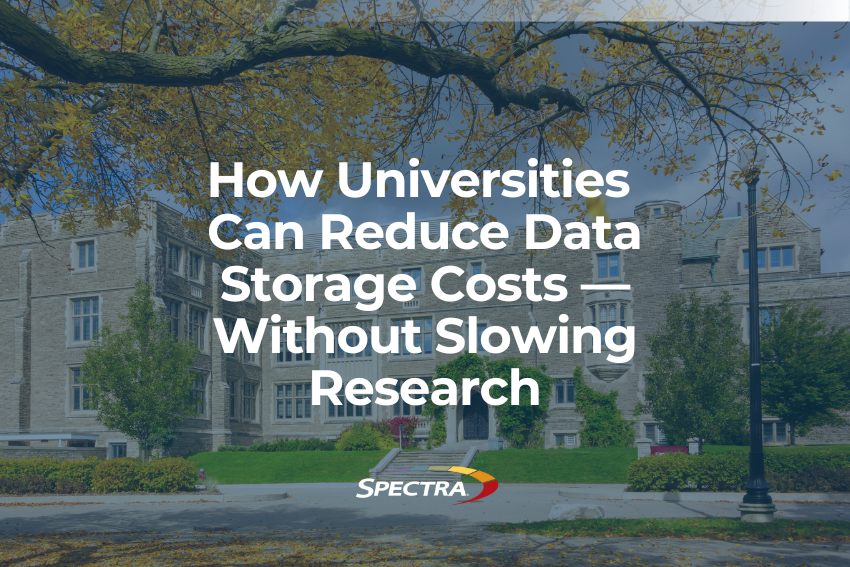————————————————————————–
Spectra recently hosted a panel discussion webinar on Data Storage Trends based on its fifth annual Digital Data Storage Outlook Report. During the webinar we talked about persistent memory, magnetic disk, tape, information lifecycle management and where storage architectures are heading.
The below questions recap webinar highlights on storage technologies that are anticipated to make impacts on our future as organizations navigate the budgetary and infrastructure challenges of capturing, sharing and preserving data, especially during these unusual times.
Persistent Memory: a New Storage Technology Makes its First Appearance on the Report
Question:
A new storage technology category (persistent memory) was added to the Digital Data Storage Outlook Report this year? What is that all about?
Answer:
Persistent memory is a storage technology that, from a performance and cost perspective, sits between DRAM and FLASH. The products coming to market are packaged in a memory DIM format and thereby reside on the memory bus. They are denser then DRAM in that Intel has announced modules of up to 512GB. They have slightly lower performance then DRAM; however, they have much lower latency than the best solid state disks (SSD). The price per GB will be less expensive than DRAM but more expensive than the most expensive SSDs. They have the advantage over DRAM of persisting data across power-downs. This characteristic opens up different ways of thinking about how applications can be created in the future.
Flash: Contributing Factors Generate Price Increase
Question:
The cost per GB of most flash technology rose in 2019 and is at best flat this year. What gives?
Answer:
Several factors may have led to the recent price increases. There is some information that indicates that the demand for some segments of flash technology, such as enterprise SSDs, are stripping supply leading to price increases in those segments. There was also talk of some power outages reducing supply and now, of course, there’s COVID, which could impact supply further. Though Spectra believes these are contributing factors, Spectra postulates that given the heavy capital investment in fabrication that has occurred, the various vendors are not willing to participate in a race to the bottom on price so are holding prices up. Given that many of them participate in the DRAM market, and that is sometimes subject to the same market dynamic, Spectra does not see this argument as being implausible.
Magnetic Disk: Volume Decrease Continues
Question:
What does magnetic disk’s long-term viability look like and where does Spectra see it going?

Disk volumes have been decreasing for many years and probably will continue to do so for the foreseeable future. In fact in 2012, disk volumes attained more than 600 million, but in 2019, Spectra estimates that disk volumes shrunk to about half of that. Much of this decrease has been due to the intrusion of flash into certain disk spaces. Take laptops for example. In 2012 most came with a magnetic disk drive, whereas today, a flash drive is standard. And in some cases, the flash is even built into the motherboard. These trends have not taken the disk manufacturers by surprise, as they have been managing their business downwards, eliminating product lines and closing associated factories, all while remaining profitable during this transition. In order to maintain long-term viability, they will need to make some reasonable improvements in capacity of their products; however, it will not need to be at the rate of Moore’s Law. Spectra continues to see magnetic disk being a key storage component for the foreseeable future.
Tape: Use Cases Point to a Promising Future
Question:
It looks like there have been yearly declines in tape use for backup. Where does Spectra see the tape market heading in the future?
Answer:
It is true that the use of tape for backup has decreased as organizations have moved to disk, however, tape for long-term archival of data continues to increase. Tape is ideally suited for archival by providing low power, high data density, the lowest cost per GB of any storage medium, and very high data integrity over a long period of time. Tape use in data archival makes a lot of sense at higher capacity needs, but there is a shift at the low end away from tape and disk to the cloud for long-term data retention. At the same time, the cloud is also adopting tape for the same reasons it is used in large on-premise archives (low cost, long-term data integrity, and very high data density). The shift to tape primarily as an archive medium bodes well for tape technology as the amount of data going into archives continues to skyrocket. Tape use also continues to grow in the data protection arena. Over the past decade ransomware attacks have grown exponentially and organizations have come to realize that one of the only ways to truly protect their digital assets is to rely on an “air gap”, which tape inherently provides. There is no way to encrypt and hold hostage a tape that is in a slot in a tape library and electronically disconnected from the network. By making a second copy of data on tape and keeping it in another location, organizations are protected from both a ransomware attack and catastrophes like a natural disaster. All in all, these use cases add up to a promising future for tape.








